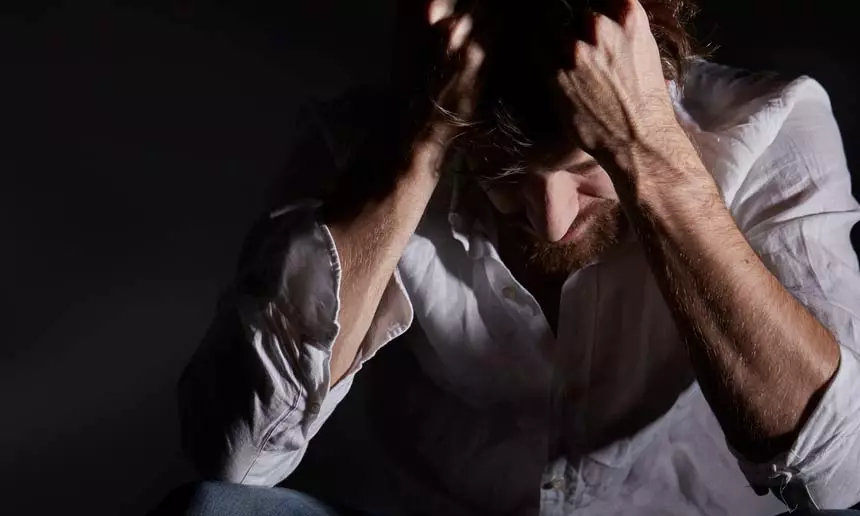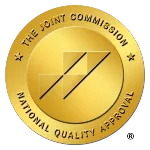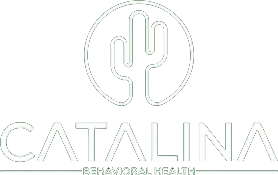Extreme fluctuations in mood, energy, and behavior are hallmarks of bipolar disorder, a persistent mood condition. The major symptoms of bipolar disorder are mania and hypomania, and most persons also experience depression.
Keep reading to find out more about effective forms of bipolar disorder treatment, and how Catalina Behavioral Health can help you take your life back!
Bipolar Disorder: What Is It?
Bipolar disorder is a lifelong mood disease and mental health condition characterized by extreme alterations in mood, energy levels, thought processes, and behavior. Previously known as manic depression or manic-depressive sickness, these terms are now both encompassed under bipolar disorder treatment. Daily life is disrupted by these changes, which might continue for a few hours to a few months.
The mood swings, or hypomania/mania and depression, that characterize bipolar illness can take several forms. Yet, those who suffer from bipolar illness don’t always exhibit either hypomania or mania or depression. At other times, they feel euthymia, or a state of happiness.
24 Hour Mental Health Treatment – Call Now!
Treatment for Episodes of Mania
Depressive episodes are less characteristic of bipolar II disorder than mania is of bipolar I disease. You need to have experienced at least one manic episode lasting at least a week, with or without ever having experienced a depressive episode, to fulfill the criteria for bipolar I disorder.
An episode of mania is characterized by an elevated or irritated mood, along with rapid and dramatic shifts in other aspects of one’s personality, such as one’s emotional state, mental process, energy level, level of speech, and level of physical activity. The people around you will definitely sense the difference between your normal self and this new, highly energetic one.
People experiencing manic episodes are more likely to engage in risky behaviors that put them or others in danger, such as spending or gambling large sums of money quickly or driving dangerously. Psychotic symptoms, such as delusions and hallucinations, may also arise, making it difficult to differentiate bipolar illness from conditions like schizophrenia and schizoaffective disorder.
Hypomania is a milder version of mania that occurs in people with specific forms of bipolar, such as bipolar II disorder. Unlike manic episodes, it doesn’t stay linger as long and usually comes with less sever symptoms than outright manic episodes.
Although often less noticeable, hypomania can still result in the need for bipolar disorder treatment, as many of the side effects can interfere with daily living.
Depression and Bipolar Disorder Treatment

When you’re going through a depressive episode, you could feel sad or down, lose interest in most things, and exhibit other signs of depression, such as:
- Fatigue
- Difficulty eating normally
- Feeling hopeless
Manic Depression vs Bipolar Disorder
The terms “manic-depressive sickness” and “manic depression” have been deliberately abandoned in recent decades by the medical community, particularly in the area of psychiatry, when referring to bipolar disorder. Multiple factors, such as:
Doctors used to diagnose a wide variety of mental illnesses as “manic sadness.” The new term “bipolar disorder” provides for better clarity in diagnosis as mental health condition categorization systems, such as the Diagnostic and Statistical Manual of Mental Disorders (DSM), have evolved much as bipolar disorder treatment itself has progressed.
The word “maniac” has contributed much to the negative connotation that surrounds the words “manic” and “mania.” In a similar vein, the term “depression” is sometimes used interchangeably with “sadness” to describe states that fall short of clinical depression.
Using the term “bipolar disorder” diverts attention away from these two terms. When compared to “manic depression,” the term “bipolar disorder” is less emotionally charged because of its clinical, medical nature.
There are a few different types of manic depression, and “manic depression” does not include cyclothymia or hypomania (bipolar II illness).
The Four Forms of Bipolar Disorder
Among the four subtypes of bipolar disorder are:
Mania occurs in at least one episode in people with bipolar disorder I. Mania and sadness are both common symptoms of bipolar I disorder; however, a depressive episode is not required for diagnosis. Episodes of depression typically continue for two weeks or more. A manic episode must persist for at least seven days or be severe enough to warrant hospitalization for a diagnosis of bipolar I. These schizophrenic episodes are not limited to those with bipolar I. (episodes of both manic and depressive symptoms).
Hypomanic and depressed episodes characterize those who suffer from bipolar disorder type II. However, they never have a full-blown manic episode, which is a hallmark of bipolar I. Bipolar II condition is often more disabling than bipolar I disorder because of the prevalence of persistent depression in bipolar II, even if hypomania is less damaging than mania.
People with cyclothymic bipolar disorder (cyclothymia) experience extreme mood swings on a regular basis. Over the course of two years, they sway between hypomania and moderate melancholy. Temporary periods of normal mood (euthymia) may occur in people with cyclothymia, but they seldom persist for more than eight weeks.
Other bipolar disorders: Another specified or unnamed bipolar disorder is diagnosed when a person has undergone episodes of clinically substantial abnormal mood elevation but does not fulfill the diagnostic criteria for bipolar I, II, or cyclothymia.
BPD vs Bipolar Disorder

Borderline personality disorder (BPD) and bipolar disorder (BD) are sometimes mistaken for one another since they have many characteristics.
An ongoing pattern of extreme and unpredictable shifts in mood, behavior, and perception of oneself, typically precipitated by interpersonal conflicts, characterizes persons with borderline personality disorder. In BPD, as opposed to bipolar disorder, self-injury for reasons other than suicide is also frequent.
Separate and more prolonged bouts of mania, hypomania, and/or depression characterize BPD, setting it apart from bipolar disorder. Sleep disruptions, emotional stress, certain medicines, and substance abuse are just a few of the many potential causes of a manic or depressed episode.
How Common Is Bipolar Disorder?
As many as 5.7 million adult Americans, or 2.6% of the population, suffer from bipolar disorder. It is clear from this staggering number that more effective bipolar disorder treatment facilities are needed nationwide.
What are the Risk Factors for Bipolar Disorder?
When does bipolar disorder show up, and what do the symptoms look like?
Hypomanic episodes are typical of bipolar disorder II and cyclothymia, while a manic episode lasting at least a week is the distinguishing feature of bipolar I disorder.
Many patients with bipolar disorder, however, also suffer from periods of hypomania or mania in addition to depression. Mood swings aren’t always predictable, and depressive episodes don’t often follow manic ones. Even if there are euthymic interludes, a person may repeatedly experience one emotional state before finally experiencing the opposing feeling.
Changes in mood from bipolar disorder can take place over a long period of time, even years.
One defining feature of these mood shifts is the degree to which they diverge from your typical demeanor and the length of time that they persist. Those experiencing mania might be affected for weeks or months, while those experiencing depression could be affected for months.
Both the depressed and manic periods can vary in intensity, both from person to person and throughout the course of the same individual’s lifetime.
Licensed Addiction Treatment
What are the Signs of a Manic Episode?
Manic or hypomanic episodes are common in persons with bipolar illness, however, not everyone will have them.
Some of the telltale signs of a manic episode are:
- Over-joyed
- Extreme and unexpected shifts in temperament, such as shifting from a happy state of mind to one of hostility.
- Restlessness.
- Rapid talking
- High energy and less sleep than normal
- Poor decision-making and increased impulsivity, such as quickly leaving a job
- Dangerous and unprotected sexual activity, substance abuse, and other dangerous activity
- A sense of superiority based on an inflated sense of your own importance, ability, or power.
- Hallucinations and psychosis
In the midst of a manic episode, it is not uncommon for the person to act recklessly without considering the potential repercussions. Some persons with bipolar illness have suicidal ideation during their manic periods as well as their depressed ones.
It may be necessary to seek bipolar disorder treatment in a residential setting for someone undergoing a severe manic episode in order to prevent danger to themselves or others, especially if they are having hallucinations and delusions.
The Hypomanic Spectrum: Signs and Symptoms

In certain cases of bipolar illness, the manic symptoms are less severe. Clinically, this is referred to as hypomania. Hypomania may cause a person to feel energetic and accomplished. It is common for people with hypomania to perform adequately in everyday life and the workplace.
During a hypomanic episode, you might not realize anything is wrong with you. But those closest to you may be perplexed by your sudden mood and activity shifts. It’s possible to go into a deep depression in the wake of hypomania.
Depression Signs During Hypomania:
- Constant, crushing disappointment
- Experiencing a lack of energy
- No drive or motivation
- No confidence
- Reduced satisfaction from activities that used to bring you joy
- Struggle to maintain focus
- Random crying
- Irritability.
- Increased periods of sleep
- Extreme sleepiness or unable to fall asleep at all
- A shift in eating habits can lead to either weight reduction or an increase
- Depression, hopelessness, or thoughts of harming oneself
Mixed Episode & Other Mental Disorders: Signs and Symptoms
An individual experiencing a mixed episode will experience both manic and depressed symptoms. Depression-like symptoms are present during a mixed episode, but so are sensations of agitation, restlessness, and increased energy.
Individuals with bipolar illness who have experienced mixed episodes typically rate them as among the most distressing.
What Causes Bipolar Disorder?
It is still unclear to researchers what causes bipolar depression. Bipolar disorder treatment for depression can be more complex because of the lack of knowledge regarding its origin. However, our medical professionals are able to treat bipolar disorder after carefully interviewing clients and formulating a personalized treatment plan.
More than two-thirds of those who suffer from bipolar depression may trace their disease back to a close biological family. However, having a parent, sibling, or child who suffers from bipolar illness is no guarantee that you will also struggle with the condition.
People with bipolar disorder may have challenges with the following:
Brain damage or brain chemistry changes and/or head trauma

People with bipolar disorder have been shown to have slight variations in the average size or activity of certain brain areas. However, brain scans are unable to detect the illness.
Trauma and stress
A manic or depressed episode may be triggered by a traumatic life event such as the loss of a loved one, a major illness, a divorce, or financial difficulties. This suggests that both stress and trauma may play a role in the development of bipolar and other mood disorders.
Finding out the root trauma is important for treating bipolar disorder. Using a diagnostic and statistical manual alone is not enough for an accurate diagnosis, and our bipolar disorder treatment program goes far beyond this tool in providing compassionate care to our clients.
Testing for Bipolar and Related Disorders
How is a diagnosis of bipolar illness made?
The following are some of the methods your doctor may use to diagnose bipolar disorder:
Diagnosing Mental Health for Bipolar Disorder Treatment
A complete medical history will include questions about your current symptoms as well as your past, present, and future health, as well as any relevant family history. Family-focused therapy is extremely useful in these cases.
Blood testing or other diagnostic procedures to rule out more serious medical disorders that might be causing your symptoms (like hyperthyroidism).
A checkup for one’s mental wellness. Either your primary care physician or a specialist in mental health (psychologist or psychiatrist) may do the examination.
A manic or hypomanic episode is required for a diagnosis of bipolar disorder. To determine the subtype of bipolar illness a patient may be experiencing; mental health professionals consult the DSM.
Our mental health professionals at Catalina will evaluate the pattern of your symptoms and how they are affecting your life during the most severe episodes to identify the type of bipolar disorder you may have. We offer evidence-based treatment approaches, including the consideration of when off-label medications such as Chlortalidone may be of use in treatment.
Common Challenges for People with Bipolar Disorder

- Anxiety
- ADHD
- PTSD
- Addiction disorders and the need for dual diagnosis treatment
Medical professionals may struggle to make an accurate diagnosis of bipolar illness in patients because of these symptoms and the fact that memory is typically disrupted during mania, making it impossible for patients to recall ever having had it.
It’s possible to misdiagnose someone with schizophrenia if they’re suffering a severe manic episode with hallucinations and they have bipolar illness. Misdiagnosis of bipolar disorder as BPD is possible as well (Borderline Personality Disorder).
Since this is the case, it is crucial to present your healthcare professional with a complete and accurate account of your symptoms and experiences. It might be beneficial to bring a family member or close friend along to your doctor’s appointments who are familiar with your mental health history.
As a top bipolar disorder treatment facility for Arizona and the Southwest, our skilled clinical team at Catalina love to heave insights from as many family members and loved ones as possible to benefit our clients care.
Alcohol, other drugs, and cigarettes all have the potential to counteract the effects of prescribed medications, so it’s imperative that you cut back or stop using them altogether. Mood episodes and the severity of bipolar disorder are increased by substance abuse.
24 Hour Bipolar Disorder Treatment Hotline – Get Help Now
Find Effective Bipolar Disorder Treatment at Catalina
At Catalina Behavioral Health, we understand how frustrating dealing with any type of mood disorder can be. That’s why we’re here for you to help when you need it the most.
At our facilities, we have highly trained professionals available 24 hours per day to help you participate in one-on-one counseling, group sessions, cognitive behavioral therapy, and other effective forms of treatment.
We provide multiple levels of care for mental health and substance abuse issues and even provide dual diagnosis treatment for both of these issues combined.
You’ll have the opportunity to participate in inpatient, outpatient, PHP, and IOP treatment services, depending on the recommendations from our physicians.
We also specialize in dealing with all forms of insurance and can help you navigate the confusing process of receiving coverage or prior authorization issues for specialty treatments. We’ll do our best to help your provider in any way we can to ensure you get the treatment you need and deserve.
For more information regarding our admissions process or to find out how we can help you reclaim your life, contact a member of our admissions team today. We can’t wait to hear from you!





